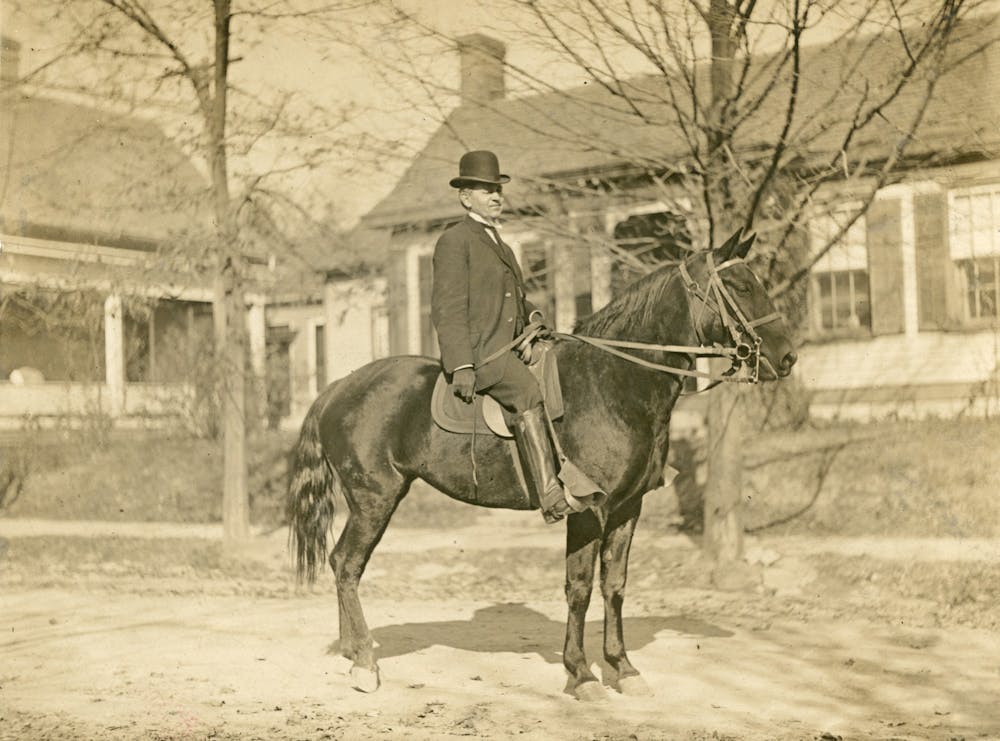The IU campus was beautiful and homey in 1920, said James Capshew, IU historian and professor. It was small, occupying about 30 acres of land, and its 2,300 students could all gather in Dunn’s Woods at the same time. It was big enough to meet new people, but small enough to know everyone, Capshew said.
In its first hundred years, IU grew from a small state seminary to a university with multiple schools. While IU was founded in 1820, its first class of four men graduated in 1830. It grew from 10 male students in 1825 to more than 2,000 in 1920, a third of whom were women. A year earlier, Frances Marshall became the first black woman to graduate from IU.
Fewer than 400 students graduated during the 1920 centennial commencement, which like other ceremonies and graduations, marked a significant moment in time, Capshew said.
“They were on their way, somewhere,” Capshew said about the graduates, staff and faculty. “It wasn’t the modern university that we know now, but the seeds were there.”
The campus was focused on growing its number of professional schools and educating its students for both general and professional purposes, Capshew said. To commemorate this, the first centennial commencement lasted six days. Ivy L. Chamness, IU graduate in 1906 and mentor, detailed each day in the "IU Centennial Memorial Volume," a book about IU’s first hundred years of history published in 1921.
“Everyone was happy to be there,” Chamness wrote. “And in the joy of meeting old friends and of seeing the campus again, forgot even such absorbing topics as the league of nations, the high cost of living and the political conventions.”
The university celebrated with baseball games against the University of Notre Dame, Purdue University and IU faculty members against students. There was a community songfest, a centennial pageant and end-of-day receptions throughout the week, starting on May 30, 1920.
Since it was raining on June 4, 1920, the commencement took place inside the Men’s Gymnasium instead of the amphitheater that used to exist in a ravine where the Chemistry Building and Wylie Hall are now.
Chamness said the advantage of an indoor commencement was that the audience could hear the speakers much better. Speakers included David Starr Jordan, John Merle Coulter, Joseph Swain and William Lowe Bryan, the seventh, eighth, ninth and 10th IU presidents, respectively.
Bryan’s address to the senior class was titled “Paradise.” It was about feeling success in triumph, losing it during times of struggle and finding it again by fearlessly confronting the worst in life.
“Nevertheless – it is possible to know the worst and not be a pessimist – to meet the worst without fear, without surrender,” Bryan read to the graduates.
These graduates may have celebrated their accomplishments where BuffaLouie’s is now, Capshew said, a popular hangout spot for students. Drinking would have been illegal because of the Prohibition, a national ban on the production and sale of alcoholic beverages from 1920 to 1933.
One hundred years later, the University planned to celebrate its bicentennial for a year, rather than six days. IU awarded actor Viola Davis with an honorary doctorate of fine arts, rang the new IU grand carillon and invited actor Laverne Cox to speak. But all in-person activities planned between March 20 and July 11 were canceled because of the coronavirus pandemic.
The 1920 graduates had overcome similar challenges. Two years prior, World War I had ended, and the 1918 flu Pandemic had begun, causing the campus to close Oct. 10, 1918. Classes resumed Nov. 4, 1918.
Whether or not they realized it, the classes of 1920 and 2020 graduated during years that marked significant historical change, Capshew said. It’s a hard thing to conceptualize, but today’s graduates are part of a pivotal moment in history that might become a reference point for the time before the pandemic, and after, he said. The year 1920 marked the time before and after the war and the pandemic.
“We're getting into another situation where there's going to be a big before and after," Capshew said. "This will go down in history not just because of the bicentennial, but because of the pandemic.”






